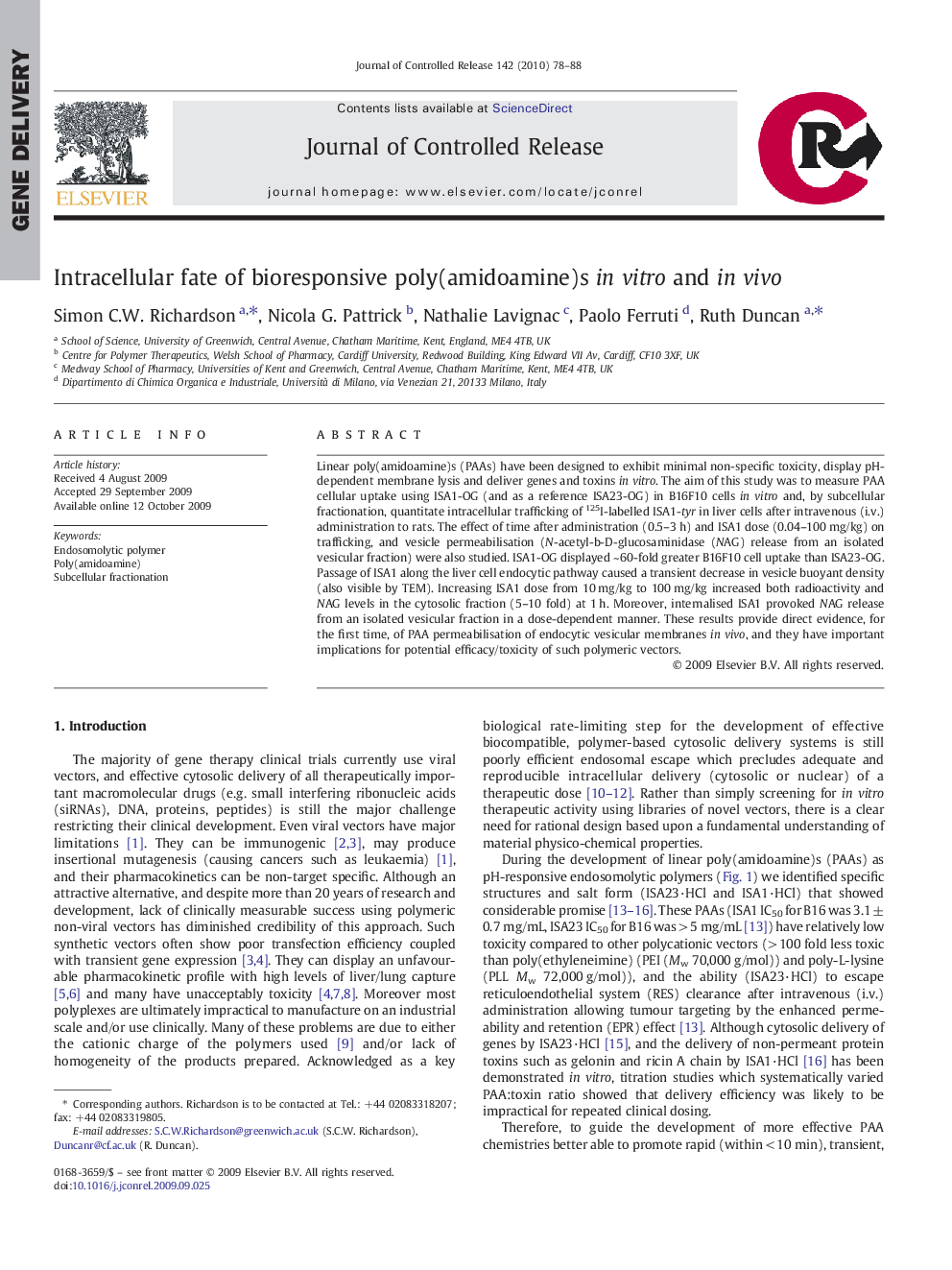| کد مقاله | کد نشریه | سال انتشار | مقاله انگلیسی | نسخه تمام متن |
|---|---|---|---|---|
| 1425859 | 986783 | 2010 | 11 صفحه PDF | دانلود رایگان |

Linear poly(amidoamine)s (PAAs) have been designed to exhibit minimal non-specific toxicity, display pH-dependent membrane lysis and deliver genes and toxins in vitro. The aim of this study was to measure PAA cellular uptake using ISA1-OG (and as a reference ISA23-OG) in B16F10 cells in vitro and, by subcellular fractionation, quantitate intracellular trafficking of 125I-labelled ISA1-tyr in liver cells after intravenous (i.v.) administration to rats. The effect of time after administration (0.5–3 h) and ISA1 dose (0.04–100 mg/kg) on trafficking, and vesicle permeabilisation (N-acetyl-b-D-glucosaminidase (NAG) release from an isolated vesicular fraction) were also studied. ISA1-OG displayed ~ 60-fold greater B16F10 cell uptake than ISA23-OG. Passage of ISA1 along the liver cell endocytic pathway caused a transient decrease in vesicle buoyant density (also visible by TEM). Increasing ISA1 dose from 10 mg/kg to 100 mg/kg increased both radioactivity and NAG levels in the cytosolic fraction (5–10 fold) at 1 h. Moreover, internalised ISA1 provoked NAG release from an isolated vesicular fraction in a dose-dependent manner. These results provide direct evidence, for the first time, of PAA permeabilisation of endocytic vesicular membranes in vivo, and they have important implications for potential efficacy/toxicity of such polymeric vectors.
Figure optionsDownload as PowerPoint slide
Journal: Journal of Controlled Release - Volume 142, Issue 1, 25 February 2010, Pages 78–88